Paradise Tree Snake
Paradise Tree Snake (Chrysopelea paradisi)
[Last Updated: 29 April 2017]
These are great snakes for a couple of reasons. Number 1 – their colors. This snake looks like Christmas – right? Amazing oranges, greens, and blacks make it very unique.
Number 2? They fly. Well, they glide very far when they jump from a high vantage point. They can glide dozens of meters – and probably more. These snakes are limited only by how high they are when they jump. Typically they use their gliding ability to travel from tree to tree in search of prey, or to elude capture by a predator.
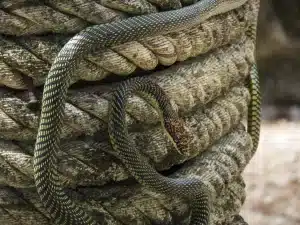
Name: Chrysopelea paradisi. Paradise Tree Snake. Also called “Paradise flying snake.”
Length: As long as 1.2 meters (almost 4 feet)
Appearance: Very similar in all aspects to C. ornata with the exception of scale coloration. C. paradisi has black scales on the neck and body which have a green or yellow dot in the center of each scale. Scales on the dorsal near the vertebral column may have an orange or reddish coloration. Some call this the flower pattern. Great variation occurs as to how much orange is evident on the dorsal area – some have on the head, and completely down the body to the tail. Others have some orange on the head and a little bit on the neck, and none of the rest of the body.
Range: Thailand-wide. This one was found in Krabi province at sea-level in a handbag shop at the beach. We’ve found them in rainforest near a Thailand resort as well.
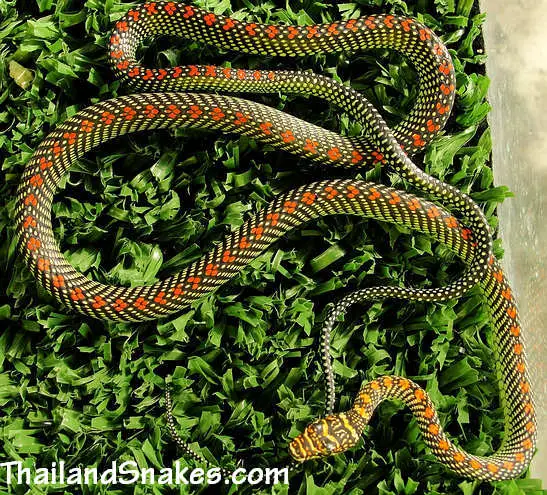
Habitat: Bushes, ground, trees, roofs. They are often found in palm tree fronds. I have found them there as well as small trees with big leaves and a lot of open area so they can see – presumably. I have found them as high as 500 meters vertically up a mountain in Thailand, and at sea level. Recently we found one 7 meters up a large tree on a hot sunny day.
Active Time? Diurnal – active during the day in trees and bushes, and occasionally on the ground.
Food: House geckos, Tokay geckos, lizards, bats, and frogs.
Defensive Behavior: They bite very quickly, but have small mouths and teeth. There has been no medically significant case of envenomation mentioned in the literature. They are considered harmless for humans and probably pets over the size of a cat.
Venom Toxicity: Weak for humans. Effective for geckos, frogs and bats. These are rear-fanged colubrids and a prolonged bite could cause swelling and pain at the bite site.
Offspring: They produce eggs which hatch during May/June in Thailand.
Notes: C. Paradisi is distinguished from C. ornata by the orange/red coloration at the top of the body, sometimes at the head, sometimes more of the body is colored, and sometimes the entire head and body are covered in the red flower like scale patterns.
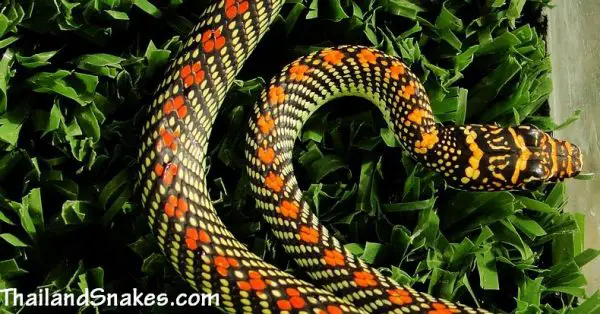
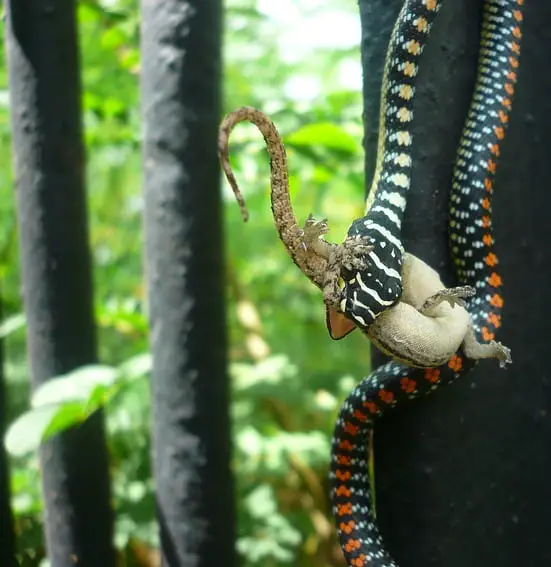
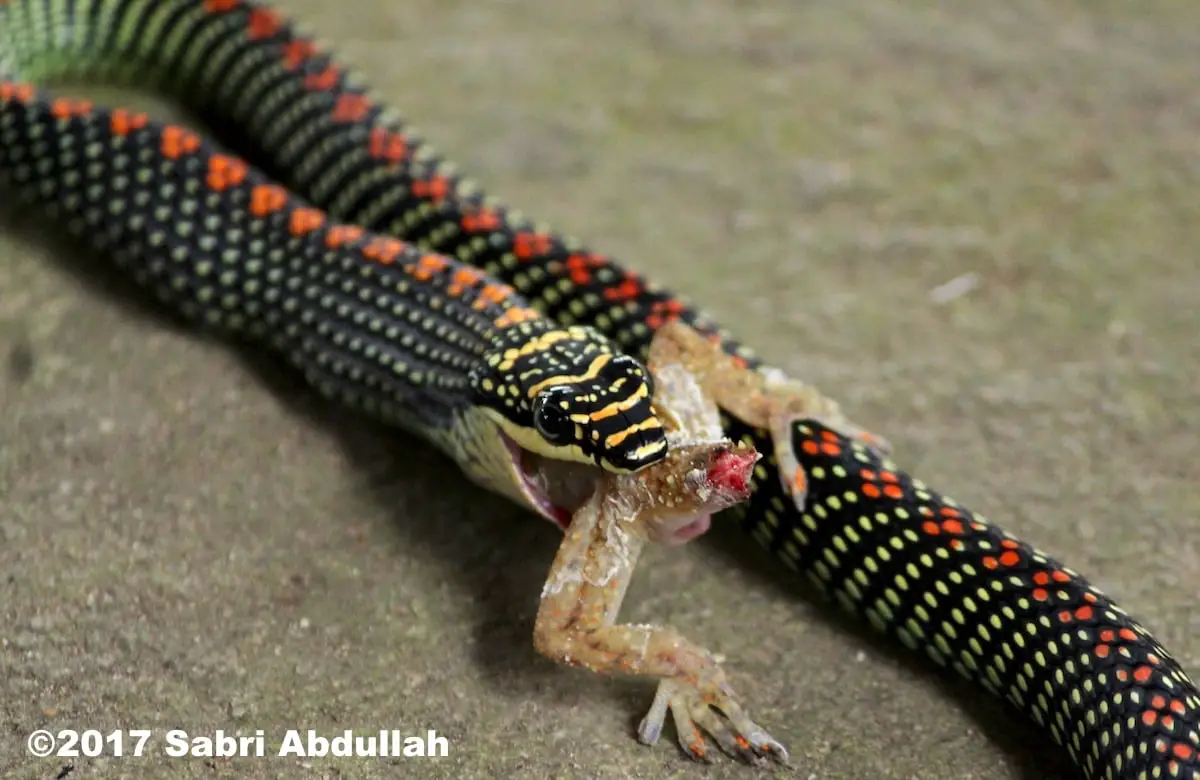

Kingdom: Animalia
Phylum: Chordata
Class: Reptilia
Order: Squamata
Suborder: Serpentes
Family: Colubridae
Subfamily: Colubrinae
Genus: Chrysopelea
Species: C. paradisi
Binomial name – Chrysopelea paradisi
Classified by Boie, in the year 1827
Video of C. paradisi the Paradise Tree Snake:

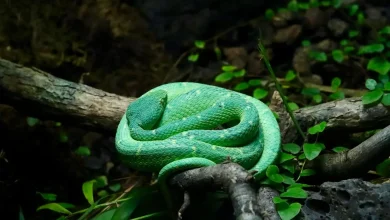
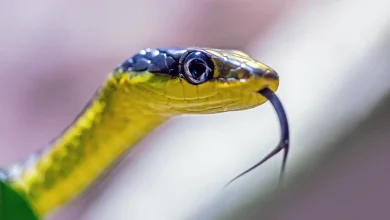
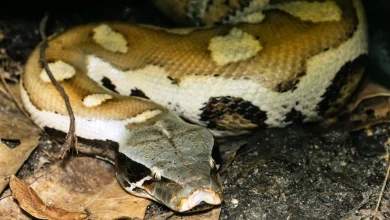
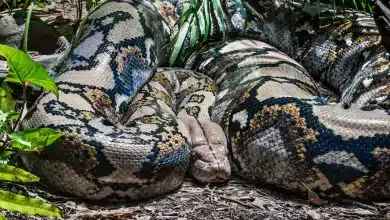
Hi! Thanks for making such a detailed article. This snake appeared at my yard and it looks amazing! Hello from Malaysia.
Sure! Was fun making them when I had the time. These are great looking snakes. More common in the south… :P
If Paradise snake bite me?
What can I do?
I can go to the doctor or not?
If the Chrysopelea paradisi bit you, you will not likely have any symptoms at all. If you DO have any symptoms, go to the hospital, yes. They have a very mild venom that doesn’t seem to affect people at all.
Same! Hahaha. That’s why I’m here.
Hi.. nice snake to make as a pet. I’ve seen a few .. but i run from it thought this was a venomous snake hihihi…
It is technically, venomous.
Hi from Philippines I found same. Is it really venomous?
How venomous they are?
They can kill human?
No, no deaths of humans ever recorded from this snake. They can stun a gecko – the big tokays. That’s about as big an animal as I think their venom can affect.